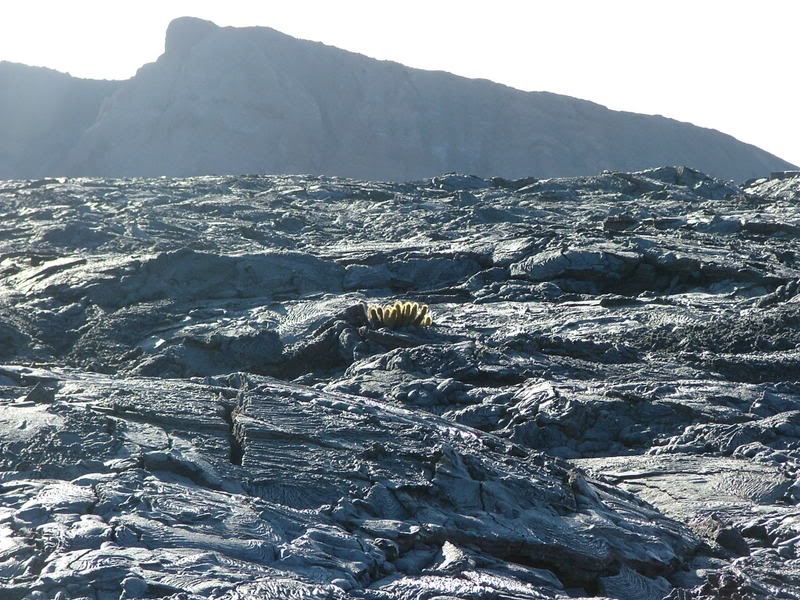 |
| Image by me |
Welcome to the real Galápagos. Yes, the cactus in the picture is listed as vulnerable (lava cactus, Brachycereus nesioticus). The islands were formed (are forming, really) by volcanic activity, so there’s been no contact with the South American continent, some 600 miles away. This means everything that arrives there must be able to manage at least a 600 mile drift, usually on mats of vegetation blown over from wherever they came. This leads to an over-representation in reptiles, because they’re really good at managing a long time without any food or water. Birds get blown off course in the process of migrating, but they’re not ugly enough for inclusion. Mammals tend to have much too fast a metabolism to let them manage months without food, so the only (non-sea-faring; there are sea lions) mammals on the islands are the ever-present mice, which can survive practically anything. There are also bats, which probably got blown off course like the birds.
What EUTs call the Galápagos home? Well, the marine iguanas (Amblyrhynchus cristatus), and land iguanas (Conolophus subcristatus and C. pallidus) certainly fit the bill. The giant tortoises (Geochelone nigra, with many, many subspecies) may not be ugly enough, but it’s certainly plenty endangered. In my attempt to be more welcoming to all kingdoms1, there are also the cacti: the lava cactus mentioned earlier, an endemic species of prickly pear (Opuntia galapageia, also with a few subspecies), and the candelabra cactus (Jasminocereus thouarsii). There are plenty of other endangered things, but most of them are too pretty for me to talk about.
Why are they endangered? Goats, mostly. They escape farms or get released by sailors2 and then they run rampant, eating tons of vegetation, leaving none for the tortoises or land iguanas, and stepping on all the reptiles’ nests. Remember the issues the blue iguanas had with cats and rats and dogs? Well, cats and dogs and (non-endemic) rats have been introduced in the Galápagos, so the iguanas here have the exact same problem. And, since none of them are found anywhere else in the world, the animals there are starting at a disadvantage.
And to top it off, hundreds of people are flocking to the Galápagos each day, walking around, taking pictures, et cetera, et cetera. And what does this do for the islands? Funds the conservation, as one pays for entrance into the Galápagos National Park and into the Charles Darwin Research Station. The rules about what the groups are able to do, always with a trained guide, are strict enough that tourists do not adversely affect the wildlife3. What are the conservation efforts doing? There are successful breeding programs for the tortoises4 and the land iguanas at the Research Station. There is lots of work going into the goat eradication program, which at times involves people in helicopters with rifles. If any of my readers have had to deal with invasive species closer to home5, this will not seem like overkill, and it is certainly getting the job done.
Edit: I've just put up a new t-shirt design. Enjoy.
1I’m still looking for an endangered bacterium. No luck so far.
2Alright, sailors releasing them were mostly in the 1700s, but it’s taken them until recently to get rid of those.
3Stay on the trail. No touching animals. Do not take sand, shells, bones or any other item from the island. Wash your shoes between islands to prevent mixing sand. Seriously.
4Baby tortoises are much too cute to be discussed here. Oh well.
5For example, have wanted to take a gallon of gasoline and a match to multiflora rose.

No comments:
Post a Comment